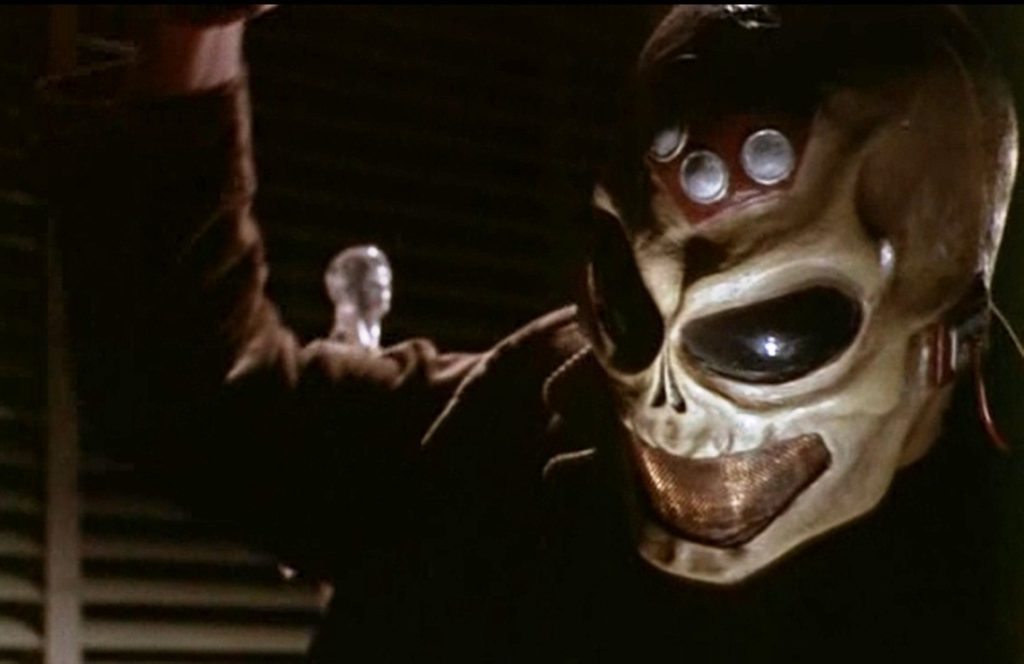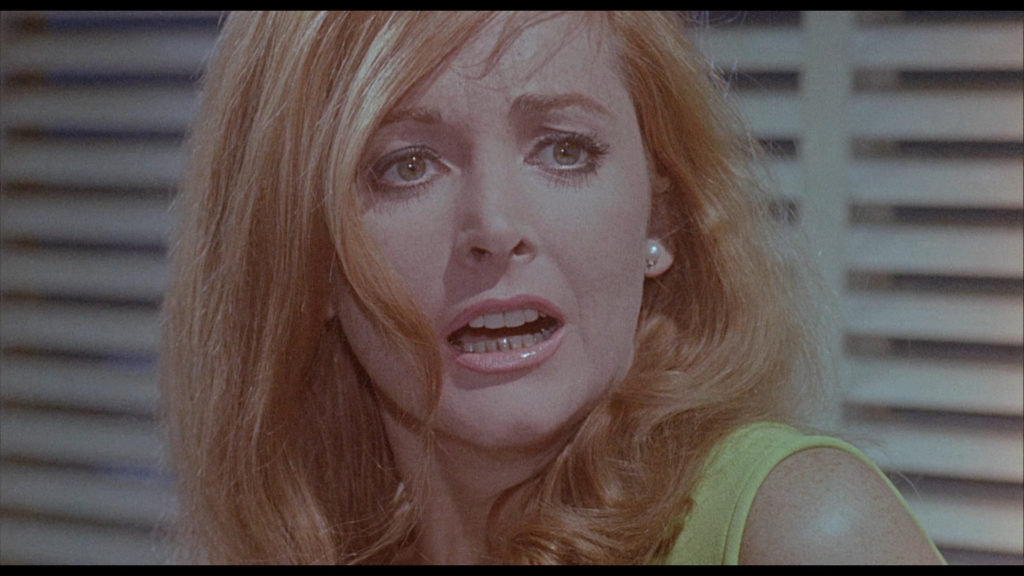SEE Berserk Crazed Mutants Menace – in HD!
DIRECTED BY TED V. MIKELS/1968
STREET DATE: OCTOBER 11, 2016/Kino Lorber Studio Classics
 I appreciate a “good bad movie” as much as the next guy, maybe even more so. And make no mistake, this one’s a corker! But even through the litany of hammy performances, the deluge of vague, unexplained plotty-plot sciencey-science, and an awesome disregard for filmmaking ineptitude, there’s something oddly defeating about Ted V. Miklas’ Astro Zombies. I want to be drawn into the hilariousness of it all, but somehow I just kept falling asleep.
I appreciate a “good bad movie” as much as the next guy, maybe even more so. And make no mistake, this one’s a corker! But even through the litany of hammy performances, the deluge of vague, unexplained plotty-plot sciencey-science, and an awesome disregard for filmmaking ineptitude, there’s something oddly defeating about Ted V. Miklas’ Astro Zombies. I want to be drawn into the hilariousness of it all, but somehow I just kept falling asleep.
Is it that bad? Oh yes. But it seems to know it and wear it on its sleeves, which is so very often the kiss of death for such films. Of course, this film was made before the age of “midnight movies”, and before the widespread heckling of movies became an irony-fueled pastime. Mystery Science Theater 3000 was but a far off twinkle in anyone’s eye. But that doesn’t prevent Kino Lorber from including a RiffTrax commentary, consisting of several of that series‘ alum.
Why does the Astro Zombie jam a flashlight into his forehead right after he happens to find it? Why does Carradine and his brow-furling assistant need to make Astro Zombies in the first place? And what are the villains up to, anyway? Who knows, man.
Hailing from that landmark year for horror, 1968, (Romero’s Night of the Living Dead and Polanski’s Rosemary’s Baby assure that standing) Astro Zombies (AKA “The Astro-Zombies”) has nonetheless earned a standing high amid the “so bad it’s good” heap. Without a doubt, it’s a hard position to scrutinize: After opening with a nauseatingly long driving sequence which shows off the L.A. freeway system in all it’s winding late-60s glory and ends in murder punctuated with splattered red paint for blood, it cold cuts to opening titles, super-imposed over… an array of battery operated robot toys and light-up toy tanks?!? It’s not even the ten minute point in this ninety-one minute opus, and already the level of glorious head-scratching confusion is off the charts.

Yet, it then goes into a series of mind-numbingly draggy laboratory scenes and scenes of Official Men in suits standing around in Official Rooms next to flag and maps saying Official Things. The RiffTrax guys are all too happy to point out the momentum killing drudgery of these moments without end; even their particular brand of scripted hit and miss quippy comedy can’t save these lukewarm portions. All the “blood exchangers” (John Carradine’s – yes, that John Carradine, of Hollywood’s Golden Age – makeshift contraption for swapping red blood for green zombie blood) and Visible Man toys doubling for medical models can’t wake up these corners of cumbersome claptrap.
Then Tura Satana, of Russ Meyer Faster Pussycat Kill! Kill! Fame, arrives on the scene – in a booth at some sort of Playboy Club, doing nefarious business with more than one bozo who thinks he’s tough stuff, no less. Adorned in almost as much exotic eyeliner as nefarious attitude, Satana is an intriguing villainous presence throughout, well endowed and strangely threatening. A deadly black widow in a bright pink peekaboo gown.

Tura Satana turns the hose, er, I mean the gun on John Carradine.
The director of Astro Zombies, Ted V. Mikels, has been described as a legendary auteur of low budget schlock. He’s still around and still working, apparently still making Astro Zombies (The Astro-Zombies?) sequels. (Look like there are three at this point?) As he’s also the screenwriter, producer, and cameraman of this movie, it’s hard to know just what he’s going for plot-wise. Why does the Astro Zombie jam a flashlight into his forehead right after he happens to find it? Why does Carradine and his brow-furling assistant need to make Astro Zombies in the first place? And what are the villains up to, anyway? Who knows, man.
It helps that he has his own commentary track to explain everything, right down to his “special relationship” at the time with Satana. Listening to Mikels dither on happily about this most famous film of his, interrupting his own scattershot reminiscings only to narrate the action (clarifying!), and vice versa, is like sitting with a jolly old man who’s greatest claim to professional dignity is, in not so many words, how he shamelessly abandoned professional dignity from the outset. Honestly, listening to Mikels is more of a hoot than the RiffTrax guys.
But if two audio commentary tracks just aren’t enough, never fear, good horror hound – there is a third! This one a “historian track” with Chris Alexander, formerly of Fangoria and Rue Morgue magazines. Honestly, I didn’t get as far into his high energy track, as it starts off with a longish recap about his own career before getting into any meat of the movie. I’ll catch up with it one day. But for now, this review deadline looms!
Aside from the three count ’em three commentaries, there are trailers for this as well as a fine selection of other off-the-hook horror titles that Kino Lorber has or will have to offer.

While Astro Zombies is, at times, a perfect storm of “good bad movie” tropes and qualities (shot on mismatched short ends, moments of fading and flickering washed out color, and night scenes that are obviously broad daylight) it might just be too long to truly claim the cinema crap crown that some apparently think it wears. Which is weird to say about an hour and a half long movie, but there you go. Also, it should be mentioned that although relatively tame as far as schlocky horror can go, Astro Zombies nonetheless has just enough quasi-nudity and uncomfortable sexual rambunctiousness to render it inappropriate for younger viewers.
The Kino Lorber Studio Classics blu-ray walks the line of maintaining Astro Zombie‘s always-compromised filmmaking qualities while also delivering a sufficiently high-end HD 1080p presentation of the material. Think “bad movie, opening day” quality. Well-caffeinated fans of Ted V. Mikels, Astro Zombies, and rubber mask-wearing monsters in general will be happy to own this edition of this inglorious edition to the cinematic horror pantheon of 1968.
Cue the toy robots and tanks…
The images used in the review are present only as a reference to the film and are not meant to reflect the actual image quality of the Blu-ray.

